Latin name: Areca
Category: evergreen trees
Birthplace: Madagascar, Comoros
Areca - an elegant and presentable beauty of silhouettes
Areca (Areca) - is a genus with more than fifty perse highly decorative varieties of crops, in the Palm family (Arecaceae).
Considering the fact that tropical palms do not have the opportunity to live in middle latitudes, nevertheless, some varieties of areca palms have found wide application in the home. Since this culture is unique, the interest of amateur flower growers is growing rapidly in order to learn more about the representative of the exotic - the Areca palm. And the appearance of this exotic tropica in our latitudes must be grateful to experienced flower growers and specialists who managed to help several varieties of pictorial culture adapt to extreme situations.
For lovers of overseas flowers, the acquisition of areca will be a wonderful and bold intention to organize a unique tropical oasis. After all, cultivated varieties have saved all indicators of the qualitative properties of a tree with a main attraction and a unique appearance. And not only with its beauty, the areca palm conquers flower growers, but also with its beneficial properties.
Leaf plates are involved in the effective neutralization of about eighty-five percent of the substances that are air pollutants.
Such dangerous substances are carbon monoxide and other equally dangerous toxins.
Areca palms are native to Madagascar and the Comoros. Natural conditions of the tropics with wet undergrowth are acceptable for areca. The natural habitat of this amazing palm tree is the territory of South and Southeast Asia. It can be found in the Solomon Islands, the Philippines, New Guinea, India, Sri Lanka, Australia in its northern part and East Africa.
In the conditions of the tropical zone, areca is grown not only to improve the environment, but also as a plant with medicinal properties. Areca seeds have the effect of a drug, as well as the alkaloid arecoline, which is able to fight against intraocular pressure. Plant preparations are used to relieve rheumatic pains.
The alkaloid arecoline is the official drug in medicine.
Veterinary medicine widely uses the laxative anthelmintic action of areca for the treatment of animals. Rheumatism in animals is also cured with arecoline bromide.
Areca seeds have a pigment that dyes cotton products terracotta and red.
In nature, these fast-growing real giants reach a height of twenty meters or more. Areca palm has a thin, smooth stem covered with ring-shaped scars - the result of fallen leaves.
The main attraction of the palm tree is the pinnately dissected leaves of bright green color, which are especially thick and beautiful in young plants. They are presented with alternately arranged, short petioles. And they are represented by belt-like or lanceolate, narrow and hard lobes of large wai leaves with a glossy surface and parallel venation, they acquire waviness and amazing elegance.
With age, leaf plates rise higher and higher along the trunk, and old areca trees are decorated with leaves only from above. The question of how fast areca grows can be answered unambiguously.
Areca is the fastest growing palm tree and can reach its maximum development within four years.
Blooming areca is transformed into cob inflorescences with small white flowers. In their upper part, staminate male flowers are piled up, and below - female pistillate ones. Orange-red fruits can be represented as a fibrous berry, the inside of which is occupied by horn-shaped seeds.
Most areca palms are very similar to each other, but there are some differences. For example, areca and hamedorea have very simple differences. If you know for sure about them, then it is difficult to confuse the plants. The first difference is in the leaf segments, more precisely in their numbers. Areca has six plates, and Hamedorea has a large number of them. The inflorescence of the chamedorea is represented by a loose panicle, and that of the areca by a dense cob. The height of the areca significantly exceeds the chamedorea.
Very often, other palm-like plants can be confused with a palm tree. And it is not surprising, because they also have a woody stem, on which there are no leaves, and on top of the trunk is decorated with a lush top with fan-shaped and feather-like leaves. Such exotic beauties resembling a palm tree are bokarney, dieffenbachia, dracaena, yucca.
Types of Areca
There are many different varieties of this culture, but areca in the interior of office space, hotel lobbies is found only in selected species of this unique plant.
Areca Chrysalidocarpus
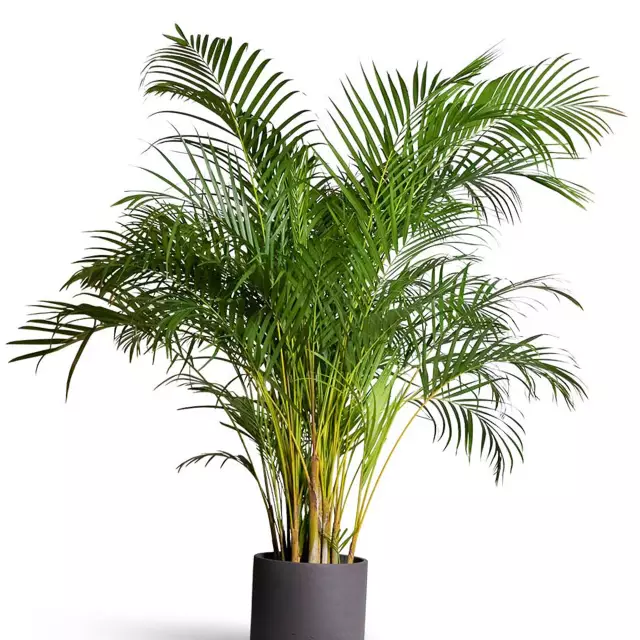 In its homeland, the island of Madagascar, this branching beauty can reach a height of ten meters. Dark green leaf plates are represented by wide feathers, the length of which can reach two meters and a width of one meter.
In its homeland, the island of Madagascar, this branching beauty can reach a height of ten meters. Dark green leaf plates are represented by wide feathers, the length of which can reach two meters and a width of one meter.
At home, with good care, you can contemplate the flowering of a palm tree, followed by fruiting. The palm tree is a domestic tree, with its elegant and refined look, it will perfectly fit into the interior of an office, apartment, winter garden.
With age, Areca Chrysalidocarpus grows root offspring, if we plant them, we can get a young indoor palm tree.
Areca Catechu
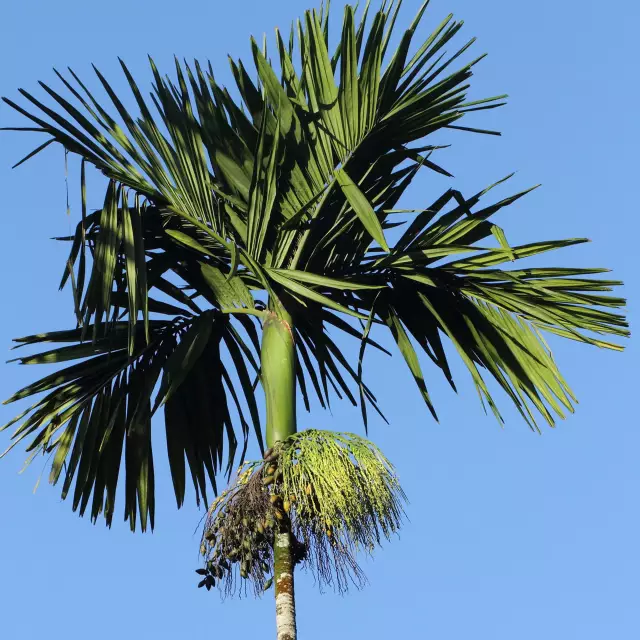 The homeland of this single-stem palm is the tropical regions of the Malay Peninsula and the Malay Archipelago with beautiful coastlines. Here, the highly decorative Betel palm tree can reach twenty-five meters in height with a trunk diameter of twelve centimeters, and home conditions allow it to reach a height of three meters.
The homeland of this single-stem palm is the tropical regions of the Malay Peninsula and the Malay Archipelago with beautiful coastlines. Here, the highly decorative Betel palm tree can reach twenty-five meters in height with a trunk diameter of twelve centimeters, and home conditions allow it to reach a height of three meters.
The same huge wild-growing palm trees are Washingtonia, Date palm.
On the trunk there are scars of an annular configuration. Pinnate leaf blades, curved in the shape of an arc, the size of which reaches one hundred and eighty centimeters, are the decoration of the stem. The dense arrangement of forty-centimeter leaves with a width of up to three centimeters adds originality and uniqueness to the Betel palm.
In the axils of the leaves, catkin-shaped inflorescences are formed, reaching a length of sixty centimeters. They are organized by little white fragrant flowers.
The fruits of the betel palm are filled with yellow-red seeds, which are also called "betel nut".
Areca yellowing (Areca lutescens)
 Malaysia is the birthplace of areca dipsis, which is considered the most highly ornamental variety of the plant. Under natural conditions, it grows up to ten meters. It has a straight stem in annular scars. Adults have yellowish leaf blades with black dots in the shape of an arc, reaching one and a half meters in length. The densely arranged segments are 30 cm long and 3 cm wide.
Malaysia is the birthplace of areca dipsis, which is considered the most highly ornamental variety of the plant. Under natural conditions, it grows up to ten meters. It has a straight stem in annular scars. Adults have yellowish leaf blades with black dots in the shape of an arc, reaching one and a half meters in length. The densely arranged segments are 30 cm long and 3 cm wide.
The main distinguishing feature of areca dipsis is the possession of an extremely aesthetic crown, reminiscent of an arch with branched inflorescences, which are collected by small yellow flowers. The popularity in indoor cultivation of this low bushy plant with lush foliage rolls over.
Three-starred areca (Areca triandra)
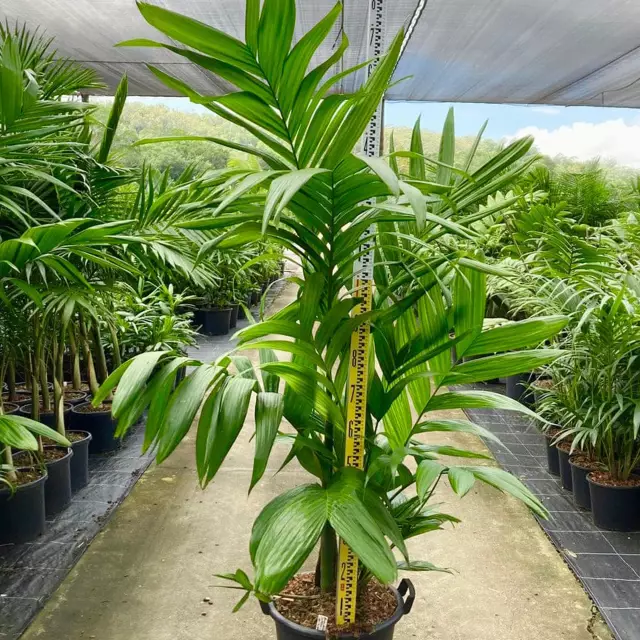 The natural habitat is the Malay Peninsula and India, where natural conditions allow the palm tree to reach a three-meter height. She has several scarred trunks. The long, one and a half meter straight leaves of the areca tretychinkkova consist of segments with dimensions of 45 cm in length and 3 cm in width, they look like a chic thick hat. White flowers are collected in inflorescences, reaching a height of one meter.
The natural habitat is the Malay Peninsula and India, where natural conditions allow the palm tree to reach a three-meter height. She has several scarred trunks. The long, one and a half meter straight leaves of the areca tretychinkkova consist of segments with dimensions of 45 cm in length and 3 cm in width, they look like a chic thick hat. White flowers are collected in inflorescences, reaching a height of one meter.
The most delicate aroma of lemon spreads from this beauty.
The fruits on a palm tree are 2.5 cm long.
The cultivated highly decorative three-stamen palm tree has proven itself well in spacious rooms with warm conditions.
Areca home care
Areca looks like a large ornamental plant and will not be able to grow on a windowsill. To get a chic palm tree that came to us from the tropical jungle, it must be provided with a sufficient amount of free space and the regular fulfillment of important conditions for it. These are air space wet values, light intensity, and soil mix wet values.
Choice of location and temperature
This tropical photophilous guest needs bright diffused lighting. The best option would be areas near the windows of the eastern deployment. And in the winter off-season, the areca palm tree will be pleasantly located by the window on the south side. It is not advisable to expose young palms to too bright sunlight. This can lead to curling of the leaves and the appearance of burns on them, followed by their yellowing and death.
To obtain a lush and symmetrical crown, a flowerpot with a palm tree wants to turn 180 ° around its axis with a frequency of two weeks.
Having moved to us from the tropics, areca will feel comfortable at high temperatures of about 32 ° C, but better -22-24 ° C, the substrate can warm up to 25 ° C. The lower temperature limit is about 16°C. If the areca palm falls under extremes as low as 0°C, it can lead to disease and even death.
Drafts and the action of heating devices are contraindicated for palm trees.
Humidity and watering
High humidity is considered a natural background for the areca palm, which must also be strived for at home. It will feel great at ambient humidity from 50 to 70%. To maintain such parameters, it is necessary to arrange daily spraying. A humid microclimate can be maintained by installing a pallet near a flowerpot with a palm tree, in which there is wet sand, pebbles or expanded clay. A self-watering flower pot is ideal for creating a damp aura around a palm flowerpot.
Areca is a lover of fresh air. We regularly arrange ventilation.
The quality of watering is directly related to the condition of the decorative leafy houseplant. The main indicator of the need for the next watering is slightly dried soil in the flowerpot. The approximate interval between waterings can be 4-5 days. Soft, settled, rainy, filtered water without impurities of fluorine will be acceptable for areca. The state of the substrate is maintained in a slightly damp state.
Excessive waterlogging of the substrate can lead to decay of the root system of a room palm tree with long narrow leaves. Excess water from the pan must be drained.
Soil and its top dressing
A soil sterilized mixture intended for palm or citrus crops is sold in the distribution network. An alternative to this composition would be an inpidually prepared mixture. The soil should be loose, permeable, neutral or slightly acidic. Its composition may contain turf land, part of coarse sand or perlite, peat and leaf land.
Indoor areca palm wants recharge in the warm season with a frequency of 15-20 days. For this procedure, soluble fertilizers intended for palm trees will be acceptable. Periodic spraying of a pet with a liquid nutrient solution containing trace elements will only benefit.
Areca transplant
Young specimens will not refuse an annual spring transplant, older ones - every three years. An indicator for transplanting areca into a new flowerpot is the appearance of roots near the drain holes. The diameter of the flowerpot for transplantation is selected deep and large by five centimeters over the previous one. A large palm tree is removed five centimeters of the topsoil, replacing it with fresh.
A good drainage layer of brick or expanded clay chips is required.
Areca propagation
Amateur flower growers often have a question: how do areca palms reproduce? Root suckers and seeds are used for reproduction. It is very easy to pide the bush, replanting the plant and planting a young seedling in a separate flowerpot, followed by quality care. The technological process of sowing seeds must be started by soaking them in a solution of sulfuric acid for ten minutes. The washed seeds are sown in a peat-perlite mixture, creating the conditions of a mini-greenhouse with a temperature of about 25 ° C. The appearance of the first leaf can be expected in three months.
Areca palm pests and diseases
If there is a failure in caring for a room palm tree, unexpected pests in the form of spider mites, scale insects, whiteflies, and mealybugs can visit it. If treating a houseplant with a soap solution does not give the desired results, we move on to more effective insect control measures. These will be insecticides.
Possible growing difficulties
- Why do palm leaves turn yellow? It is necessary to eliminate the deficiency in the irrigation process and increase the humidity of the air around the territory of the room palm tree with long and narrow leaves.
- The leaf blades are covered with light dry spots - the palm tree is under the influence of excessively bright lighting.
- Areca leaves wither and become too dark - the temperature is too low.
- The leaves are covered with reddish-brown spots, some parts of the plant rot - this is root rot. It is necessary to adjust the watering and fight the infection with a fungicide solution.
- Why the indoor areca palm tree does not grow - the plant needs regular airing, if there is no fresh air - the indoor flower grows slowly or stops its development altogether.
According to folk signs, the owners who grow the areca palm tree will live happily ever after in prosperity and wealth. For many peoples, the fastest growing plant is the areca palm, a symbol of fertility. Many lovers of exotic plants are sure that having such a palm tree in their environment can only face positive changes.
Areca is poisonous. Palm fruits and seeds contain toxic substances.
An elegant palm tree will decorate the interior of any territory, fill the void of any corner, and with its decorative effect will bring zest to any room, balcony, corridor. Grow and love this exotic, it will delight you with its beauty and smell.
You can admire many more interesting plants on the site by opening the catalog of indoor plants from a to z.




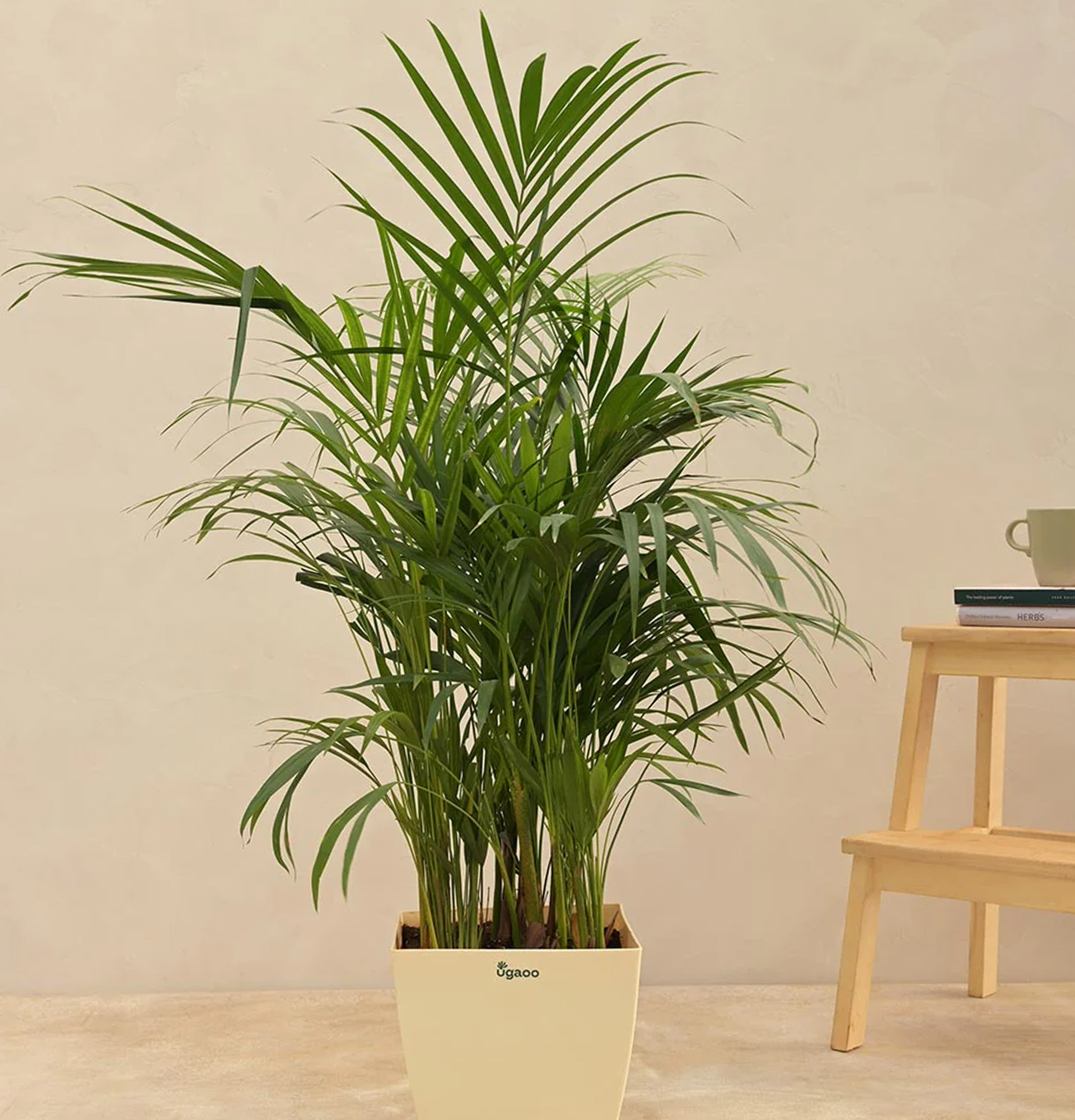










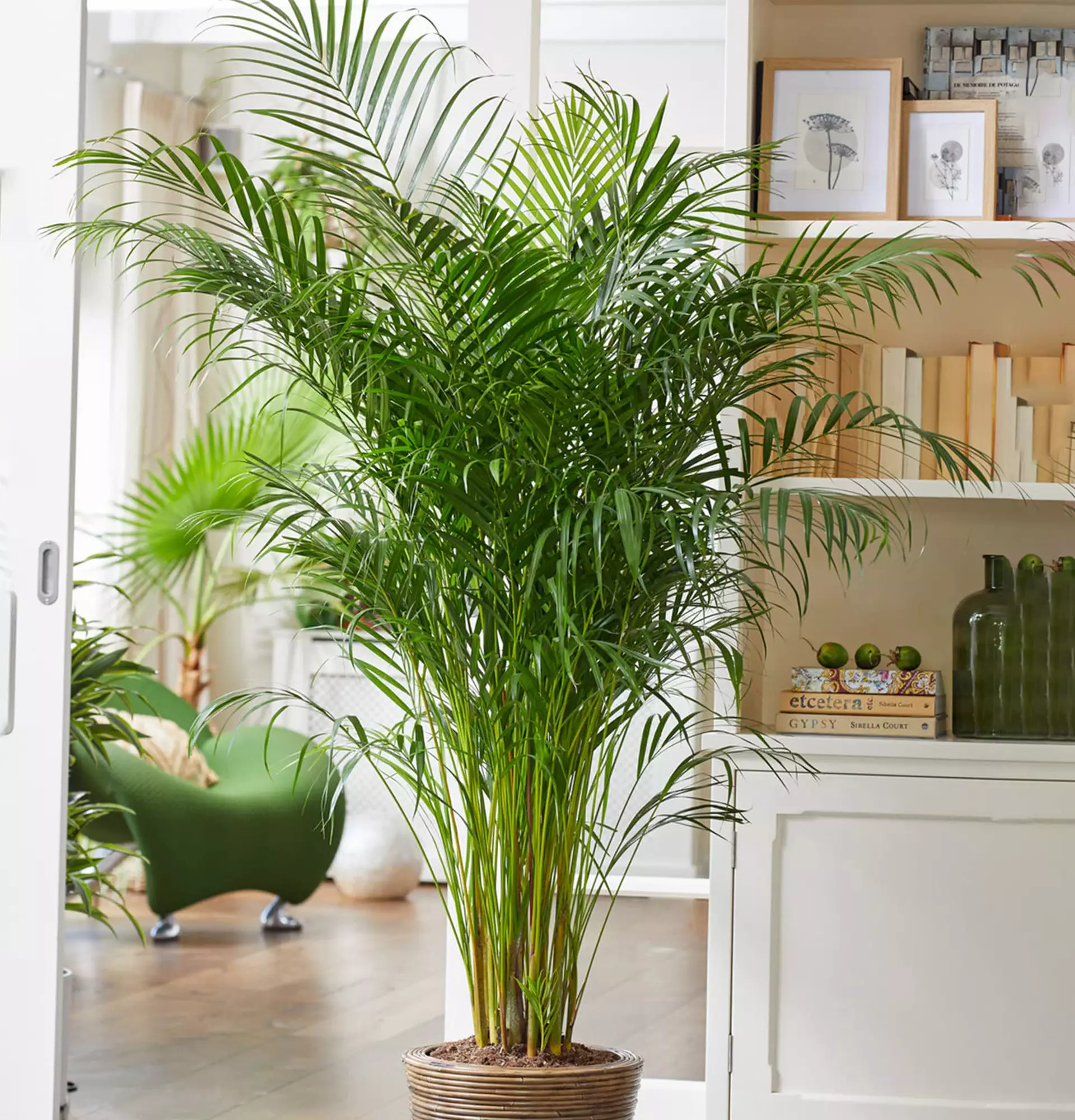
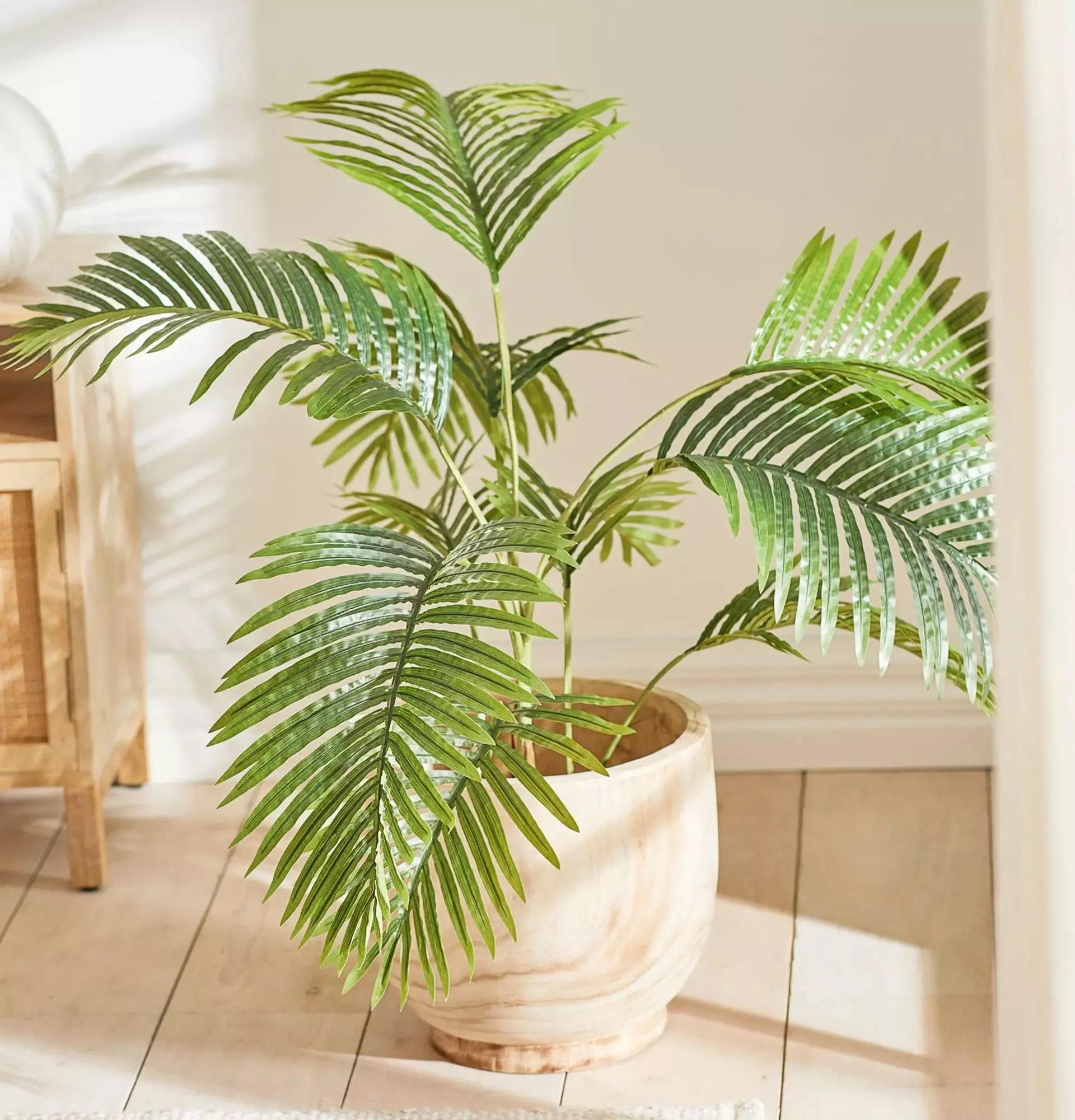

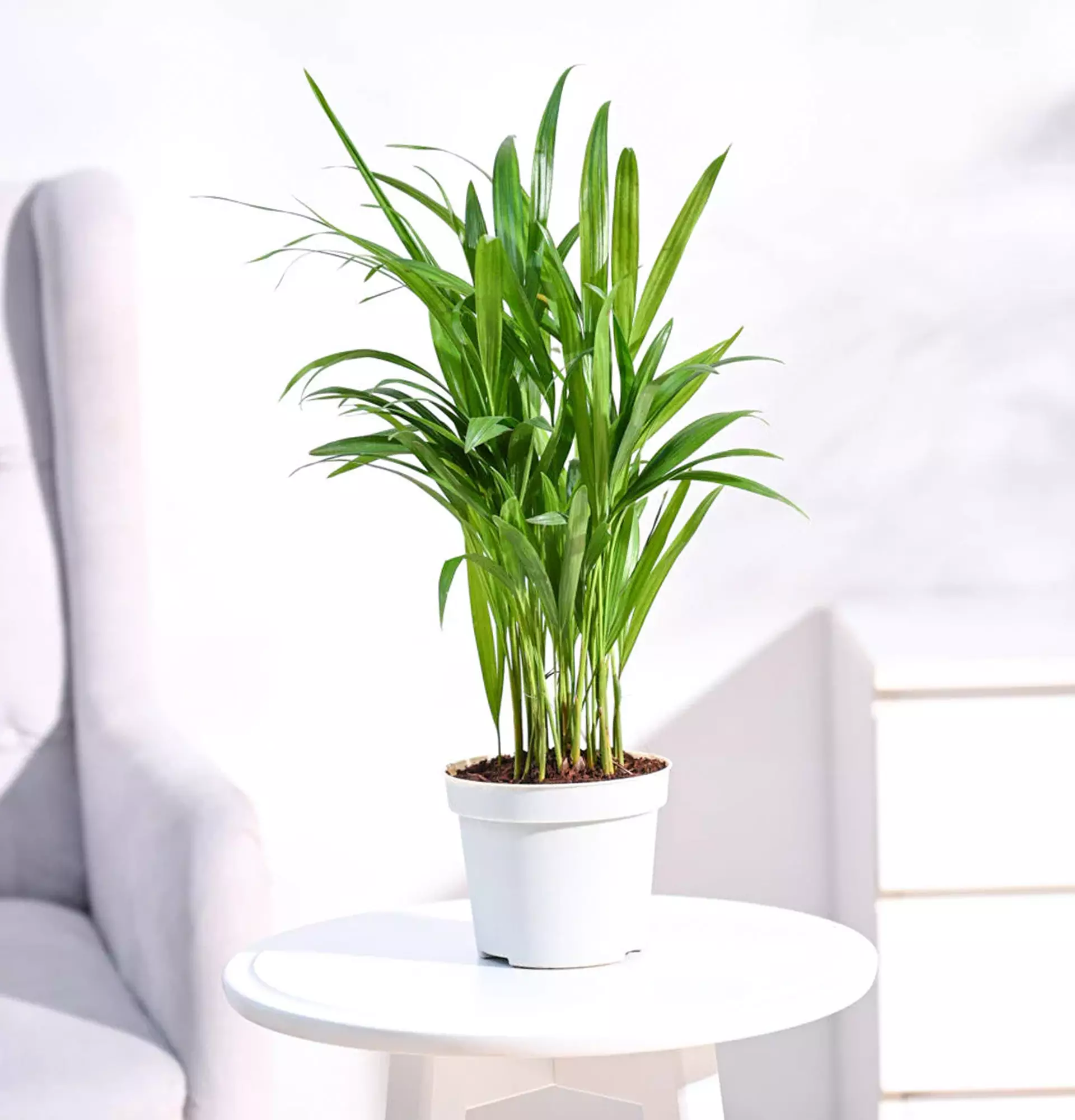
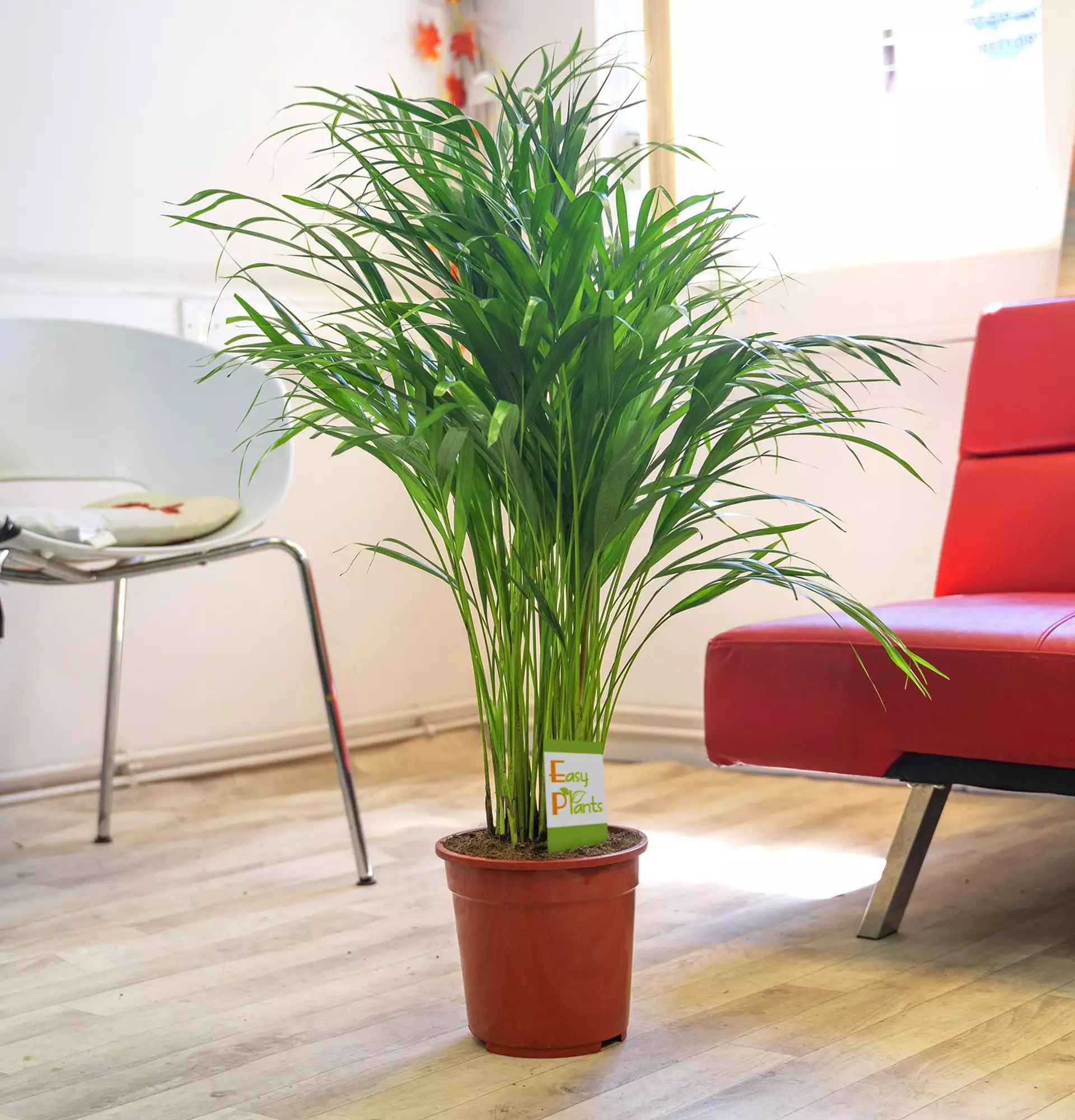
Write comments
Comments